Related Research Articles
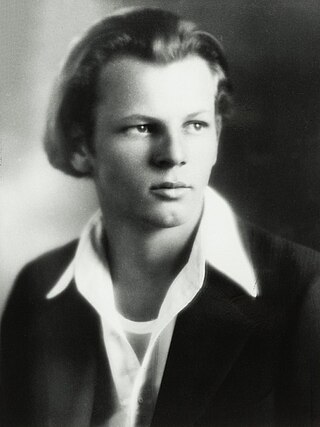
Paul Jackson Pollock was an American painter. A major figure in the abstract expressionist movement, Pollock was widely noticed for his "drip technique" of pouring or splashing liquid household paint onto a horizontal surface, enabling him to view and paint his canvases from all angles. It was called all-over painting and action painting, since he covered the entire canvas and used the force of his whole body to paint, often in a frenetic dancing style. This extreme form of abstraction divided the critics: some praised the immediacy of the creation, while others derided the random effects. In 2016, Pollock's painting titled Number 17A was reported to have fetched US$200 million in a private purchase.
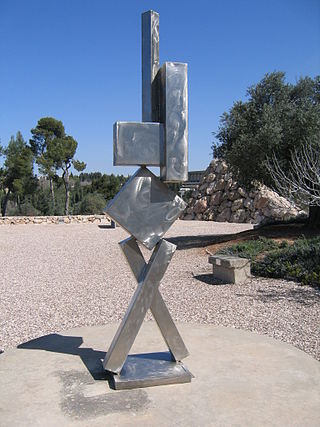
Abstract expressionism in the United States emerged as a distinct art movement in the immediate aftermath of World War II and gained mainstream acceptance in the 1950s, a shift from the American social realism of the 1930s influenced by the Great Depression and Mexican muralists. The term was first applied to American art in 1946 by the art critic Robert Coates. Key figures in the New York School, which was the epicenter of this movement, included such artists as Jackson Pollock, Franz Kline, Mark Rothko, Norman Lewis, Willem de Kooning and Theodoros Stamos among others.

Visual art of the United States or American art is visual art made in the United States or by U.S. artists. Before colonization, there were many flourishing traditions of Native American art, and where the Spanish colonized Spanish Colonial architecture and the accompanying styles in other media were quickly in place. Early colonial art on the East Coast initially relied on artists from Europe, with John White the earliest example. In the late 18th and early 19th centuries, artists primarily painted portraits, and some landscapes in a style based mainly on English painting. Furniture-makers imitating English styles and similar craftsmen were also established in the major cities, but in the English colonies, locally made pottery remained resolutely utilitarian until the 19th century, with fancy products imported.
Action painting, sometimes called "gestural abstraction", is a style of painting in which paint is spontaneously dribbled, splashed or smeared onto the canvas, rather than being carefully applied. The resulting work often emphasizes the physical act of painting itself as an essential aspect of the finished work or concern of its artist.
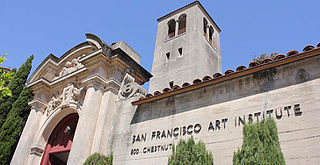
San Francisco Art Institute (SFAI) was a private college of contemporary art in San Francisco, California. Founded in 1871, SFAI was one of the oldest art schools in the United States and the oldest west of the Mississippi River. Approximately 220 undergraduates and 112 graduate students were enrolled in 2021. The institution was accredited by the Western Association of Schools and Colleges (WASC) and the National Association of Schools of Art and Design (NASAD), and was a member of the Association of Independent Colleges of Art and Design (AICAD). The school closed permanently in July 2022.

Willem de Kooning was a Dutch-American abstract expressionist artist. Born in Rotterdam, in the Netherlands, he moved to the United States in 1926, becoming an American citizen in 1962. In 1943, he married painter Elaine Fried.
The New York School was an informal group of American poets, painters, dancers, and musicians active in the 1950s and 1960s in New York City. They often drew inspiration from surrealism and the contemporary avant-garde art movements, in particular action painting, abstract expressionism, jazz, improvisational theater, experimental music, and the interaction of friends in the New York City art world's vanguard circle.

Lawren Stewart Harris LL. D. was a Canadian painter, best known as a leading member of the Group of Seven. He played a key role as a catalyst in Canadian art and as a visionary in Canadian landscape art.
Painters Eleven was a group of abstract artists active in Canada between 1953 and 1960. They are associated with the Abstract Expressionist movement.
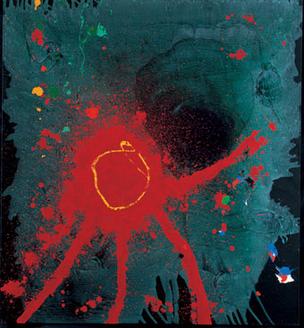
Lyrical abstraction is either of two related but distinct trends in Post-war Modernist painting:
The Art of This Century gallery was opened by Peggy Guggenheim at 30 West 57th Street in Manhattan, New York City on October 20, 1942. The gallery occupied two commercial spaces on the seventh floor of a building that was part of the midtown arts district including the Museum of Modern Art, the Museum of Non-Objective Painting, Helena Rubinstein's New Art Center, and numerous commercial galleries. The gallery exhibited important modern art until it closed in 1947, when Guggenheim returned to Europe. The gallery was designed by architect, artist, and visionary Frederick Kiesler.
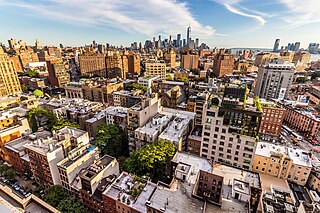
The 9th Street Art Exhibition of Paintings and Sculpture is the official title artist Franz Kline hand-lettered onto the poster he designed for the Ninth Street Show. Now considered historic, the artist-led exhibition marked the formal debut of Abstract Expressionism, and the first American art movement with international influence. The School of Paris, long the headquarters of the global art market, typically launched new movements, so there was both financial and cultural fall-out when all the excitement was suddenly emanating from New York. The postwar New York avant-garde, artists like Willem de Kooning and Jackson Pollock, would soon become "art stars," commanding large sums and international attention. The Ninth Street Show marked their "stepping-out," and that of nearly 75 other artists, including Harry Jackson, Helen Frankenthaler, Michael Goldberg, Joan Mitchell, Grace Hartigan, Robert De Niro Sr., John Ferren, Philip Guston, Elaine de Kooning, Lee Krasner, Franz Kline, Ad Reinhardt, David Smith, Milton Resnick, Joop Sanders, Robert Motherwell, Barnett Newman, and many others who were then mostly unknown to an art establishment that ignored experimental art without a ready market.
Will Barnet was an American artist known for his paintings, watercolors, drawings, and prints depicting the human figure and animals, both in casual scenes of daily life and in transcendent dreamlike worlds.

George Morrison was an Ojibwe abstract painter and sculptor from Minnesota. His Ojibwe name was Wah Wah Teh Go Nay Ga Bo. Morrison's work is associated with the Abstract Expressionist movement in the United States.
Kay WalkingStick is a Native American landscape artist and a member of the Cherokee Nation. Her later landscape paintings, executed in oil paint on wood panels often include patterns based on Southwest American Indian rugs, pottery, and other artworks.

Jeffrey A. Gibson is an American Mississippi Choctaw/Cherokee painter and sculptor. He has lived and worked in Brooklyn, New York; Hudson, New York; and Germantown, New York.
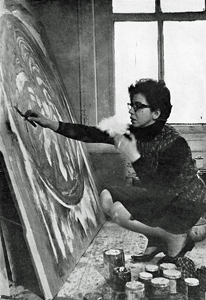
Sonia Gechtoff was an American abstract expressionist painter. Her primary medium was painting but she also created drawings and prints.

Mernet Larsen is an American artist known for idiosyncratic, disorienting narrative paintings that depict a highly abstracted, parallel world of enigmatic and mundane scenarios. Since 2000, her work has been characterized by flat, origami-like figures composed of plank-like shapes and blocky volumes and non-illusionistic space with a dislocated, aggregated vision freely combining incompatible pictorial systems—reverse, isometric, parallel, and conventional Renaissance perspectives—and various visual distortions. Critics have described her approach as "a heady, unlikely brew" taking compositional cues from wide-ranging sources, including the modernist geometries of Constructivist artists like El Lissitzky, Japanese Bunraku puppet theater and emaki narrative scrolls, early Chinese landscapes, and Indian miniatures and palace paintings. Roberta Smith wrote that Larsen's works "navigate the divide between abstraction and representation with a form of geometric figuration that owes less to Cubo-Futurism than to de Chirico, architectural rendering and early Renaissance painting of the Sienese kind. They relish human connection and odd, stretched out, sometimes contradictory perspectival effects, often perpetuated by radical shifts in scale."
Dyani White Hawk is a contemporary artist and curator of Sicangu Lakota, German, and Welsh ancestry based out of Minnesota. From 2010 to 2015, White Hawk was a curator for the Minneapolis gallery All My Relations. As an artist, White Hawk's work aesthetic is characterized by a combination of modern abstract painting and traditional Lakota art. White Hawk's pieces reflect both her Western, American upbringing and her indigenous ancestors mediums and modes for creating visual art.
Gina Knee Brook, née Gina Schnauffer, and better known as Gina Knee, (1898–1982), was a twentieth century American artist. She lived and worked in New Mexico, the American South and Long Island, New York.
References
- ↑ Kraskin, Sandra; Wardwell, Allen; Hollister, Barbara; Gibson, Ann (1991). The Indian Space Painters: Native American Sources for American Abstract Art (PDF). Sidney Mishkin Gallery, The City University of New York. Retrieved 16 February 2024.
- 1 2 3 "Indian Space Painting". Oxford Reference. Retrieved 16 February 2024.
- 1 2 Rushing, W. Jackson (Summer 1992). "Semeiology: Review - The Indian Space Painters: Native American Sources for American Abstract Art". Art Journal. 51 (2). Retrieved 16 February 2024.
- ↑ "Peter Busa". Burchfield Penney Art Center. Retrieved 16 February 2024.
- ↑ "Steve Wheeler (1912-1992)". Edith Ward Fine Art. Retrieved 16 February 2024.
- 1 2 "Cultural Cross-Currents: The Indian Space Painters". Swann Galleries. Retrieved 16 February 2024.
- ↑ Polcari, Stephen (1996). "Regional Reports". Archives of American Art Journal. 36 (2): 29–30. Retrieved 16 February 2024.
- 1 2 Goodrich, John. "Sparkling in the Shadow of Ab-Ex". Hyperallergic. Retrieved 16 February 2024.